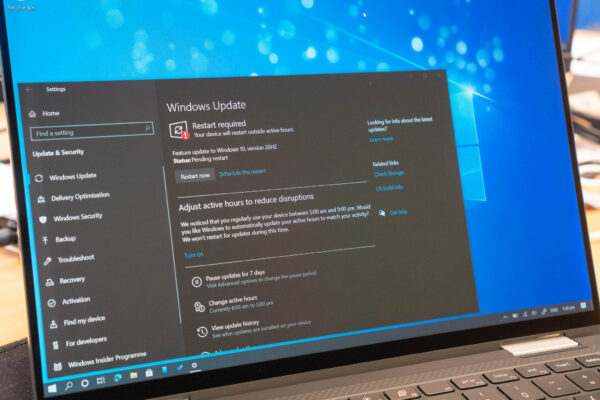
Microsoft released the 2nd semiannual update to Windows 10 last week. Officially known as the version 20H2, the latest version of Windows 10 is so small an update that you probably can’t easily tell what has changed. If feels even smaller than monthly patch updates.
For better or worse, Windows 10 20H2 is unimportant enough that you can probably skip it, but at the same time, it’s an easy enough install for you to keep up-to-date with minimum risks. You will eventually need to update, if not this time, then the next round or two. Would you rather have small incremental updates, or having to deal with them all at one go in one big bang update?
You can read about the Windows 10 20H2 changes in detail from this Windows Central article. It seems much of the changes are UI focused, but even then, there aren’t all that much, and you might even easily miss them.
The UI changes, though incremental, are important steps though. I’ve long been disappointed with the inconsistencies in Windows 10, not just from Microsoft applications, but even within the Windows 10 operating system itself. Step by step, Microsoft is trying to improve the overall experience. I still think they really need to pick up the pace.
A prime example is with the Settings app. Anyone who’s used Windows for a long time will know about the old, though still present and essential, Control Panel. They seem to do about the same kind of things. I understand, it takes time to transition. You don’t want sudden, massive, changes to surprise and shock users. This is, however, taking far too long. So long, that the perpetual small numbers of changes start to get quite annoying.
If you still haven’t switched over to Microsoft Edge, this version of Windows 10 comes with it preinstalled ,and it replaces the old Edge. I think this “forced change” is ultimately for the better. The new Edge is better than the old one in just about every way. The new Edge is built on Chromium engine, which is the same technology that powers Google Chrome. So as far as how web sites will look, feel, and work, they’ll be the same on Edge as on Chrome.
It is also interesting to note how the latest version of Windows 10 is numbered. It had always been a “YYNN” year-month number, like version 2004 was for the one earlier this year. (Though, worth noting, the numbers don’t always correspond to the word names, like how version 2004 was called “May 2020 Update”.)
Now, instead of a month, you just see H2, to denote 2nd half of the year. In some ways, this makes sense, since the schedule was to have semiannual updates anyway. Maybe, calling this latest version “2010” might lead people to wonder if this was a decade-ago out-dated version, because they read the number as the year 2010.
Or, it could be simple. Microsoft has been unable to keep to the schedule. Omitting the exact month number will allow them some slack as to when the update actually gets released. Version 1903, for example, was released in May 2019, and 1909 in November 2019.
At any rate, these version numbers do correspond to the internal development codenames of Windows 10 updates, at least since the 19H1 (for version 1903) one.
To quote Microsoft’s phraseology, “Windows 10, version 20H2 will offer a scoped set of features to improve performance and enhance quality”, this is a relatively mild update. Do note that if you are running version 1809 (October 2018 Update) or earlier, support has expired. If you are on version 1903 (May 2019 Update), support will end soon, on 8 December 2020.
